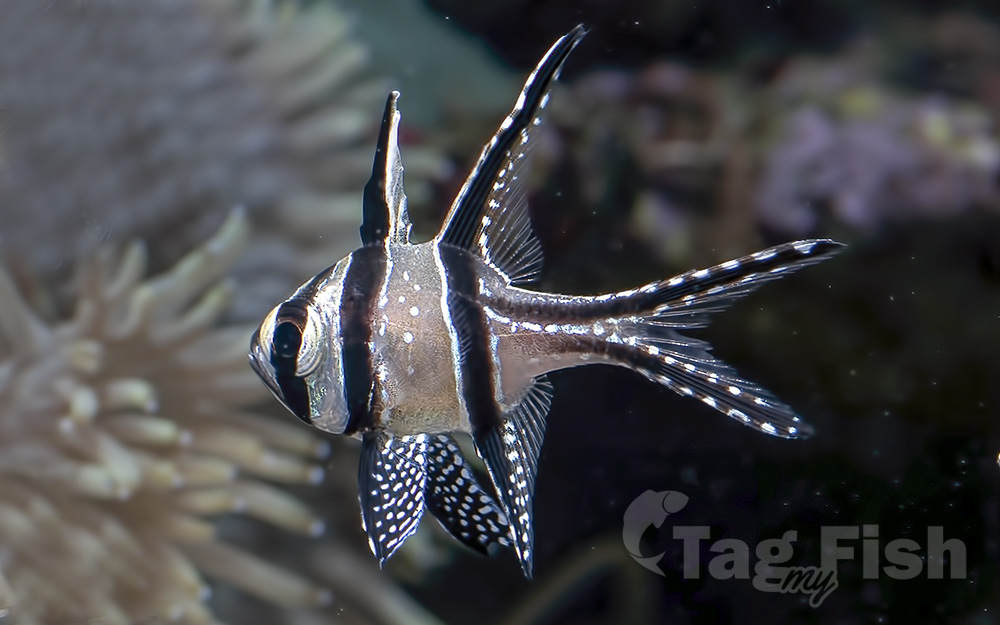Banggai cardinalfish
(Pterapogon kauderni)

Classification
General data
The Banggai cardinalfish (Pterapogon kauderni) is a small tropical cardinalfish in the family Apogonidae. It is the only member of its genus. This attractive fish is popular in the aquarium trade. It is among the relatively few marine fish to have been bred regularly in captivity, but significant numbers are still captured in the wild and it is now an endangered species. The detrimental impact of humans on its environment and certain fatal diseases threaten this species\\\\\\\' numbers significantly. Iridovirus diseases are known to be significant reason for fish mortality.
This species is restricted to the Banggai Islands of Indonesia. This species has an extremely limited geographic range (5,500 km2) and small total population size (estimated at 2.4 million).
The Banggai cardinalfish is composed of isolated populations concentrated around the shallows of 17 large and 10 small islands within the Banggai Archipelago. A small population also occurs off Central Sulawesi, within Luwuk harbor. One additional population has become established in the Lembeh Strait (North Sulawesi), 400 km north of the natural area of the species distribution, following introduction by aquarium fish traders in 2000. Small populations seen (May 2014) in Secret Bay, north west Bali (Banggai cardinal fish, Secret Bay, Bali)
Description
This species grows up to 8 centimetres (3 in) total length. It is easily differentiated from all other cardinalfishes by its tasseled first dorsal fin, elongated anal and second dorsal fin rays, deeply forked caudal fin, and color pattern consisting of three black bars across the head and body and prominent black anterior edges on the anal and second dorsal fin. The male can be differentiated from the female by a conspicuous, enlarged oral cavity, which is apparent only when they are brooding.











